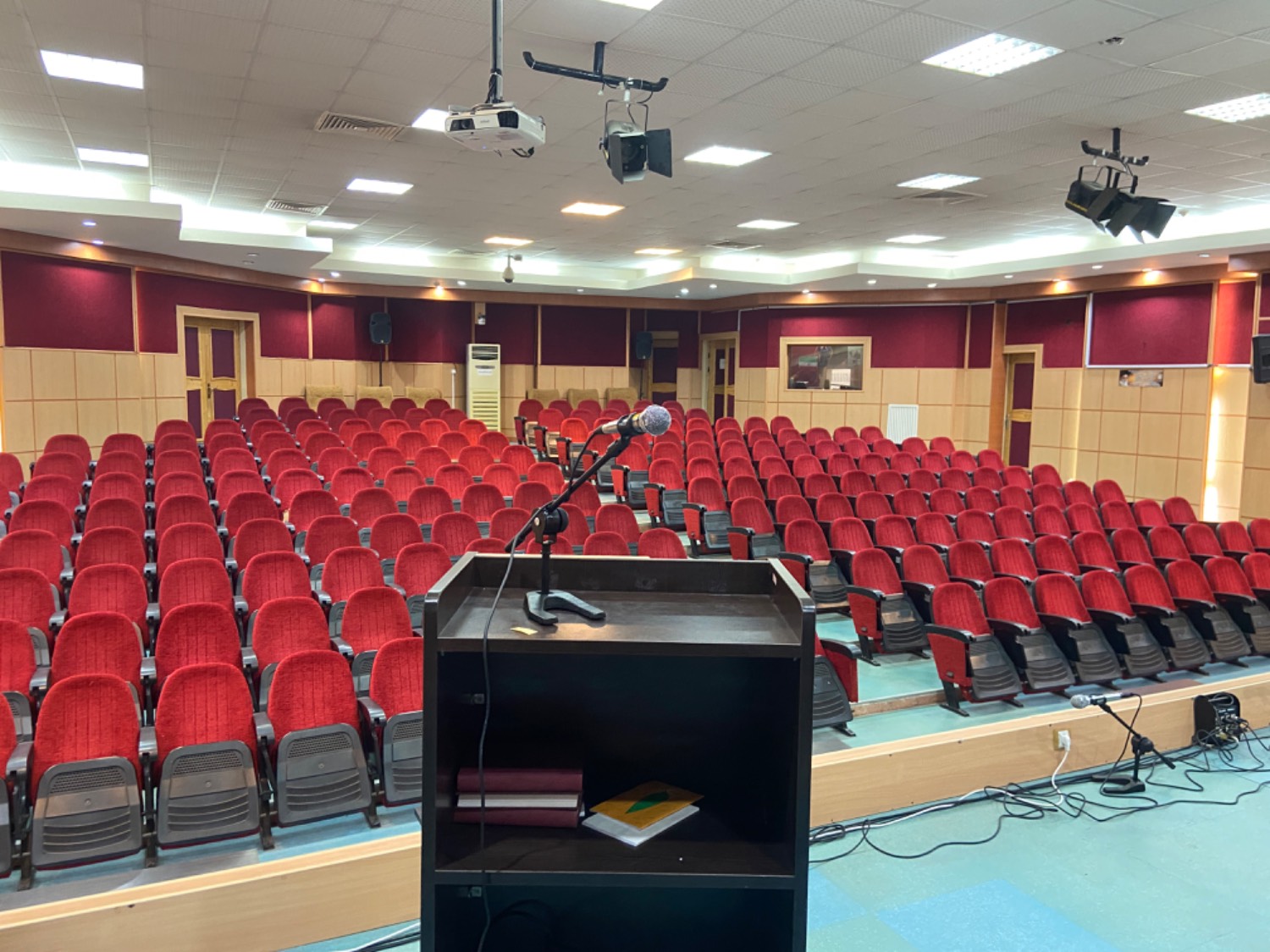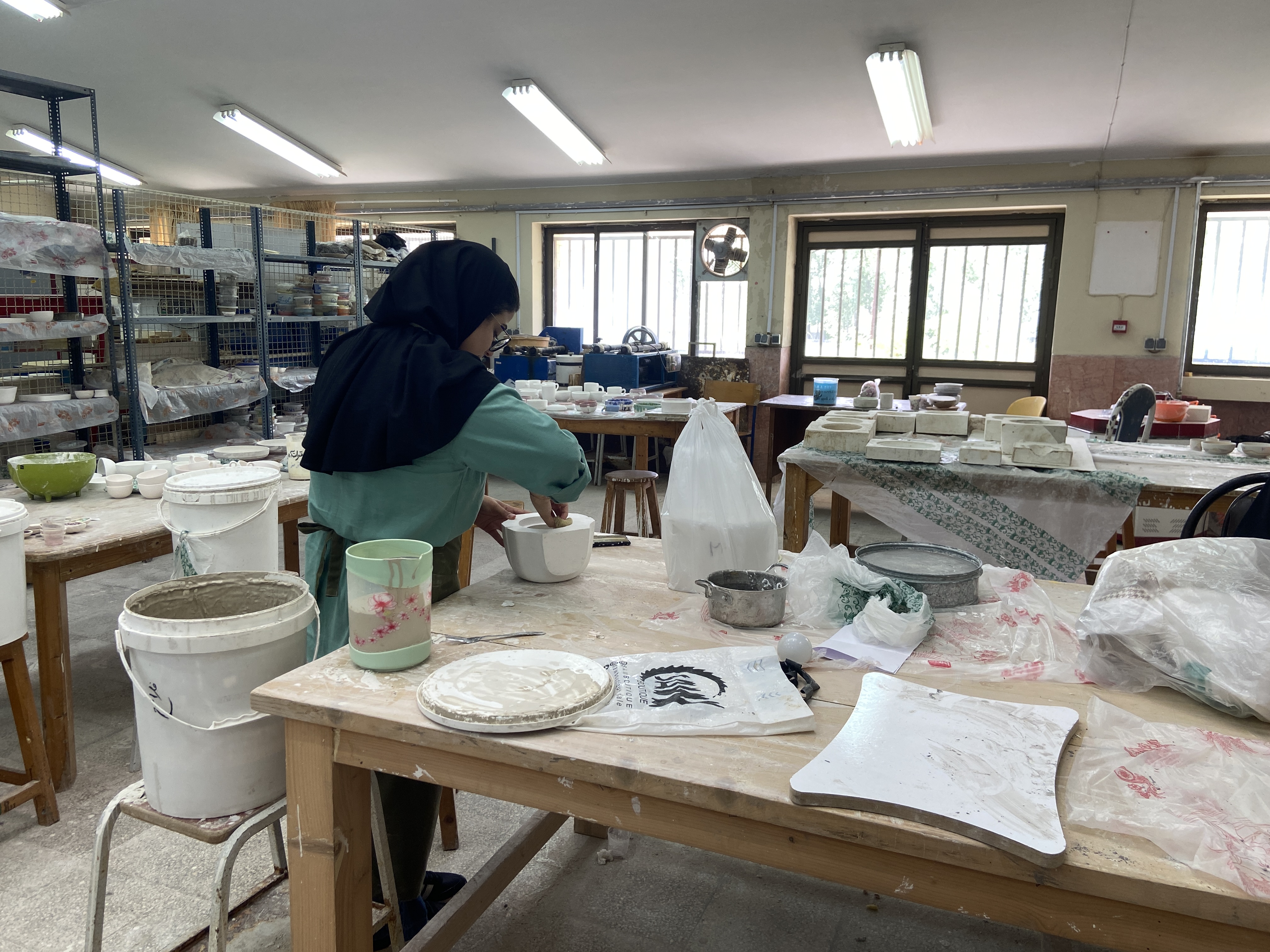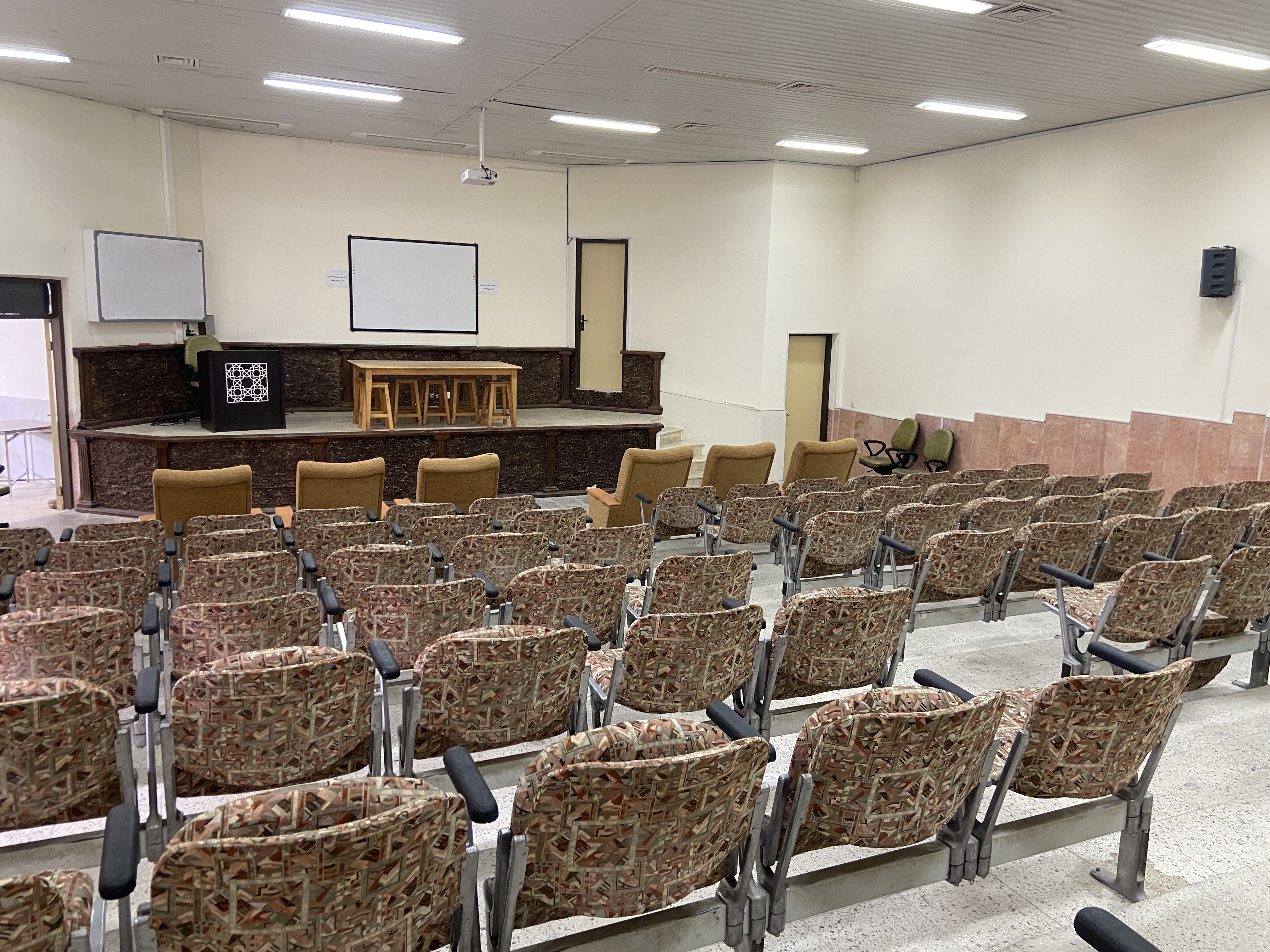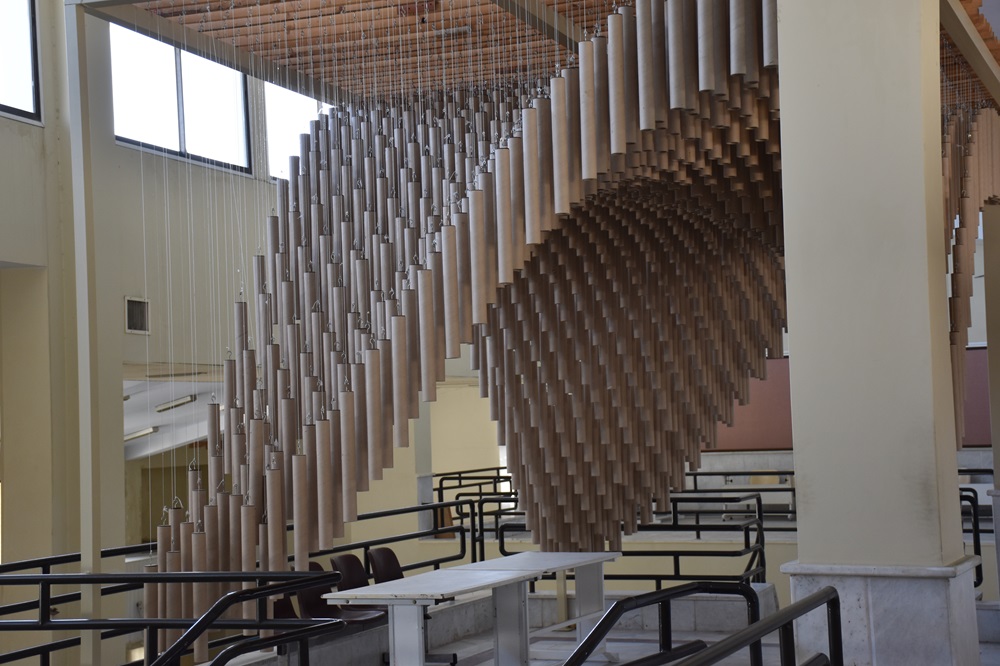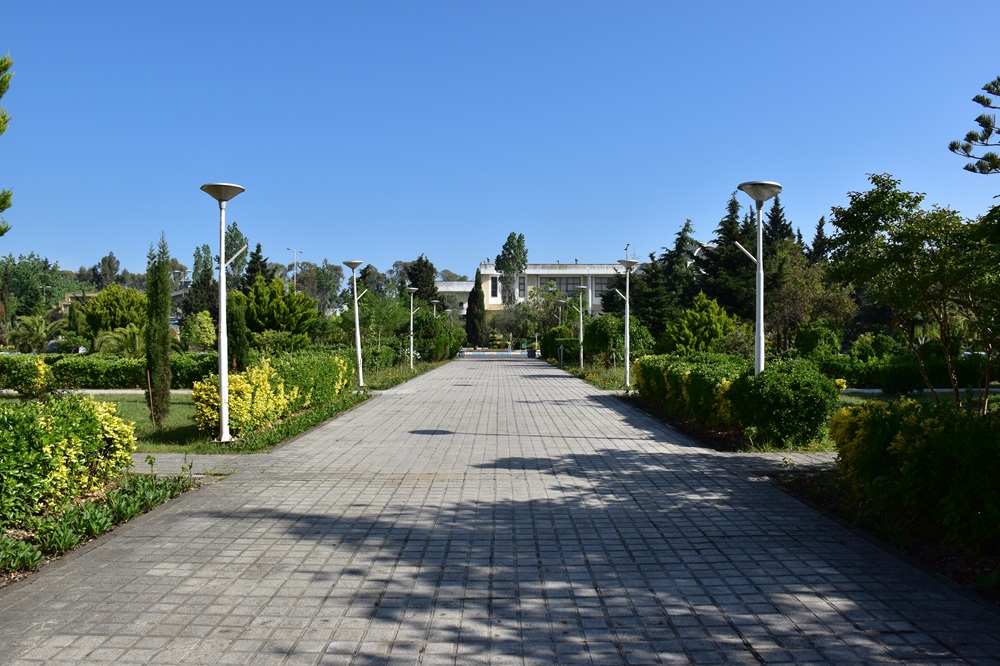Art - Foreign
About us
The Faculty of Art and Architecture of Mazandaran University started its educational activity in the academic year of 2018-2018 with five faculty members and admission of 25 undergraduate students in two fields of crafts and urban planning in a place with an area of 9600 square meters. In 2012, with the opening of the architecture department in this faculty, the number of students increased to 77 and faculty members to 8. Since 1390, after recruiting distinguished and expert faculty members and promoting them to the rank of assistant professors and assistant professors, by accepting students in the master's degree in "Art Research" and "Literature and Painting" and the doctorate in "Archaeology" we have taken our first steps in the development of education. Supplement has been removed. This faculty is equipped with 2 optimal amphitheater halls with a capacity of 120 and 220 people and 10 classrooms equipped with audiovisual facilities, computers and 8 architecture and urban planning studios, 12 specialized laboratories and workshops, including concrete, materials and construction, batik (dyeing). , weaving, painting, glass, pottery, wood, photography, painting, jewelry making, restoration, plus a computer service site and a specialized library.
Introduction of Educational Groups
In 2013, the field of archeology was opened as one of the educational groups in the Faculty of Art and Architecture. In this way, the scientific education of archeology in Mazandaran province in the heart of the comprehensive university of the province "Mazandaran University" began and the field of organizing archaeological researches and its practical management at the province level was provided by the Iranian graduates of the field of archeology of the country's universities. At present, the archeology department continues to establish this hot center and promote the motivation of search, innovation, creativity and research and continues to train efficient specialist human resources. This is following the ancient tradition of a land that has contributed to scientific development for centuries and its educational centers as scientific bases have had a great impact on the promotion and dissemination of knowledge in Iran and beyond its borders. This group is now engaged in educational and research activities in two levels of master's degree and specialized doctorate.
Introduction of the field: Archeology is the most important means of knowing the past, from distant millennia until today, as one of the basic structures of cultural identity. This knowledge makes the understanding of today's society possible and leads to the correct design of the future. From this point of view, archeology has a privileged scientific-theoretical and practical position. With a scientific and interdisciplinary approach, archeology deals with the reconstruction of cultural behavior from prehistoric times to the present, based on the works buried in the soil and water, as well as visible works. In this regard, a work or a phenomenon and topic does not gain meaning by itself but in connection with other works and phenomena, and in the form of a group, it takes on the burden of studies to reconstruct the phenomena caused by cultural behavior. Reconstruction of material culture leads to the understanding of technology and its evolution in many different fields of human life such as agriculture, industry, irrigation and water supply, hunting, animal husbandry, nutrition, communication, migration, transportation, trade, architecture and civil engineering and many other cases. Finally, it leads to the reconstruction of the economic, political, social, religious, cultural, etc. process. In this way, the scope of the field of archaeological research, this dynamic field, is actually as wide as the material and spiritual dimensions of human life, all over the world and from the beginning of his life until today. Archeology, as a new science, has undergone a remarkable transformation since a century and a half ago, and along with the rapid progress of other sciences, especially basic sciences and experimental and natural sciences, it is gaining new perspectives every day. The vastness of the land of Iran, its cultural and civilizational age of several thousand years and as a result the multitude and diversity of cultures and sites and cultural works of this land require that the archeology of Iran has a very high potential. The Department of Archeology of Mazandaran University, focusing on this issue, has used all its power to keep up with the great and rapid developments in this field and with special attention to its qualitative development, to bring about a fundamental change and in line with the balanced progress of all sciences and Especially the human sciences, which undoubtedly depends on the cultural balance of the society, should take steps.
Introduction of the field: Archeology is the most important means of knowing the past, from distant millennia until today, as one of the basic structures of cultural identity. This knowledge makes the understanding of today's society possible and leads to the correct design of the future. From this point of view, archeology has a privileged scientific-theoretical and practical position. With a scientific and interdisciplinary approach, archeology deals with the reconstruction of cultural behavior from prehistoric times to the present, based on the works buried in the soil and water, as well as visible works. In this regard, a work or a phenomenon and topic does not gain meaning by itself but in connection with other works and phenomena, and in the form of a group, it takes on the burden of studies to reconstruct the phenomena caused by cultural behavior. Reconstruction of material culture leads to the understanding of technology and its evolution in many different fields of human life such as agriculture, industry, irrigation and water supply, hunting, animal husbandry, nutrition, communication, migration, transportation, trade, architecture and civil engineering and many other cases. Finally, it leads to the reconstruction of the economic, political, social, religious, cultural, etc. process. In this way, the scope of the field of archaeological research, this dynamic field, is actually as wide as the material and spiritual dimensions of human life, all over the world and from the beginning of his life until today. Archeology, as a new science, has undergone a remarkable transformation since a century and a half ago, and along with the rapid progress of other sciences, especially basic sciences and experimental and natural sciences, it is gaining new perspectives every day. The vastness of the land of Iran, its cultural and civilizational age of several thousand years and as a result the multitude and diversity of cultures and sites and cultural works of this land require that the archeology of Iran has a very high potential. The Department of Archeology of Mazandaran University, focusing on this issue, has used all its power to keep up with the great and rapid developments in this field and with special attention to its qualitative development, to bring about a fundamental change and in line with the balanced progress of all sciences and Especially the human sciences, which undoubtedly depends on the cultural balance of the society, should take steps.
| Counter | section | field title | head of department | Head |
|---|---|---|---|---|
| 1 | Masters degree
Ph.D |
Archeology
Archeology |
Dr. Mohammad Qamari Fatideh | +981135302724 |
Handicrafts is a group of industries that all or most of the steps of making its products are done by hand and are made and dealt with in the framework of the culture and customs of each region and with ethnic perspectives. Handicrafts are a reflection of the history of civilization of every nation and ethnic group and can be an effective dissemination for the culture and traditions of different regions. Handicrafts, as a vast subset of traditional Iranian arts, have had a special place in the native and spiritual culture of our land from the distant past until today.
Required abilities:
The biggest capital of every person to enter this field is love and interest. Also, one should be strong in design, especially traditional design, and be familiar with traditional motifs. Also, a crafts student needs to get acquainted with the old culture and tradition of the country and the new machines and tools, and as a result, to present designs that have both native originality and artistic innovation. And finally, familiarity with the ancient and modern Iranian literature is a necessity for the students of this field, because our art is closely related to our literature and no Iranian artist can be alien to Iranian literature.
Job position in Iran:
Graduates of this field can do research or undergraduate work in organizations such as Iran's Cultural Heritage, Handicrafts and Tourism Organization, the General Directorate of Handicrafts in the Ministry of Agricultural Jihad, the Foundation for the Underprivileged and Veterans, the General Directorate of Museums and the Ministry of Culture and Islamic Guidance. They can also work by opening a workshop to make works that are functional as well as museum and decorative. At the same time, research work should also be considered. However, this part has been neglected so far.
Required abilities:
The biggest capital of every person to enter this field is love and interest. Also, one should be strong in design, especially traditional design, and be familiar with traditional motifs. Also, a crafts student needs to get acquainted with the old culture and tradition of the country and the new machines and tools, and as a result, to present designs that have both native originality and artistic innovation. And finally, familiarity with the ancient and modern Iranian literature is a necessity for the students of this field, because our art is closely related to our literature and no Iranian artist can be alien to Iranian literature.
Job position in Iran:
Graduates of this field can do research or undergraduate work in organizations such as Iran's Cultural Heritage, Handicrafts and Tourism Organization, the General Directorate of Handicrafts in the Ministry of Agricultural Jihad, the Foundation for the Underprivileged and Veterans, the General Directorate of Museums and the Ministry of Culture and Islamic Guidance. They can also work by opening a workshop to make works that are functional as well as museum and decorative. At the same time, research work should also be considered. However, this part has been neglected so far.
Setting up handicraft production workshops
Working in the workshop of wooden arts (inlay, mosaic, grid, volume, etc.)
Workshop for making all kinds of practical and decorative pottery
Managing exhibitions, museums and art workshops
The texture of carpets, underlays and zarbaft patterned fabrics
Activities in the workshops for the production of glazes for pottery and tiles
Designing traditional motifs for different fields of handicrafts
The workshop for making all kinds of metalwork containers, penning and engraving on it
Design and production of handicrafts (pottery, painting, carpet, wood, etc.)
Working in the workshop of wooden arts (inlay, mosaic, grid, volume, etc.)
Workshop for making all kinds of practical and decorative pottery
Managing exhibitions, museums and art workshops
The texture of carpets, underlays and zarbaft patterned fabrics
Activities in the workshops for the production of glazes for pottery and tiles
Designing traditional motifs for different fields of handicrafts
The workshop for making all kinds of metalwork containers, penning and engraving on it
Design and production of handicrafts (pottery, painting, carpet, wood, etc.)
| Counter | section | field title | head of department | Contact |
|---|---|---|---|---|
| 1 | Bachelor's degree
Bachelor's degree |
Handicrafts
Handicrafts |
Dr. Mohammad Azamzadeh |
The master's course in art research was added to the fields of art school in 2013. The purpose of this course is to encourage and encourage the thinking of art students in the category of art, the development of artistic creativity and the improvement of the level of artistic vision in Islamic culture. By completing this course, students can take effective steps in strengthening the educational and research areas of art and composition and composition in artistic fields and orientation and correction of the artistic movements of the Islamic society.
Necessity and importance:
The category of art is the pulse of the culture of every dynamic and rich society, and the national-religious-social identity of every coherent society is clearly reflected in the artistic works of that society. It is very important to create courses that can be the basis for research and the realization of cultural hopes and the revival of the original identities of the society in the sensitive valley of "art". The role and ability of graduates: Graduates of this field can teach in art schools and work as researchers in art research centers. Undergraduate
Necessity and importance:
The category of art is the pulse of the culture of every dynamic and rich society, and the national-religious-social identity of every coherent society is clearly reflected in the artistic works of that society. It is very important to create courses that can be the basis for research and the realization of cultural hopes and the revival of the original identities of the society in the sensitive valley of "art". The role and ability of graduates: Graduates of this field can teach in art schools and work as researchers in art research centers. Undergraduate
| Counter | section | field title | head of department | Contact |
|---|---|---|---|---|
| 1 | Bachelor's degree
Masters degree |
Art research
Art research |
Dr. Homayoun Haj Mohammad Hosseini |
+981135302760 |
Urban planning and its diverse trends are almost a new scientific field, whose roots should be found in some applied sciences such as architecture, landscape architecture, civil engineering, and social and behavioral sciences. The scope of the emergence of today's developments in urban planning dates back to the 19th century. As a result of the boom and development of the industry and the problems arising from it, and following the establishment of specialized, scientific and academic centers in the field of urban development, basic steps were taken to solve urban problems and various theories were stated in this field. Urban engineering is one of the most important and attractive fields in the set of national exam fields that candidates in the experimental group of mathematical and technical sciences can choose. In our country, there is a great need for experts in this field and various universities have tried to establish and create this field. At the level of the country's managers, the need for a field like urban planning has been felt and many city managers have tried to learn this knowledge.
The main axes of the field of urban engineering: In this field, there are at least six main axes that are decisive in city planning and design. that includes: 1. Physical planning 2. Planning and design of transportation networks 3. Environmental planning 4. Planning of infrastructure networks 5. Urban management and land and housing planning 6. Urban design and design of urban spaces
Career Opportunities: The fields of work in the field of urban planning in Iran are very different and diverse, in the public sector, in the country's management and planning organization, municipalities, the Ministry of the Interior, governorates and other bodies affiliated with the Ministry of the Interior, the Ministry of Housing and Urban Development, and in the private sector, in companies Consulting engineers for urban development, architecture, regional planning, etc. Some of the work fields are mentioned below: 1. Preparation of urban and regional plans (comprehensive, detailed, structural, city, conductor) 2. Consulting in urban and regional affairs to high-level managers and officials 3. Activity in municipalities 4. Activities in governorates 5. Activities in relevant ministries (housing and urban development, road and transportation, country). 6. Supervision of buildings with a height of more than 8 floors according to the law. 7. Landscaping projects, land separation, neighborhood design, etc. 8. Planning and designing various towns (residential, industrial, commercial) 9. Planning and designing new cities. 10. Location of various urban elements and uses. 11. Ability to set up and use GIS system. 12. Group activity with other specialties in various projects. 13. Activities in private and semi-private consultants for urban development, architecture, road and construction, urban design, regional planning, etc. 14. Teaching in universities
| Counter | Section | Field Title | Head of Department | Head |
|---|---|---|---|---|
| 1 | Bachelor's degree
Masters degree |
Urban Engineering
Urban Engineering |
Dr. Mohammad Reza Haqjo |
+981135302724 |
Introduction of Bachelor of Architectural Engineering Architectural engineering bachelor's course is a course that focuses on training architects with general professional efficiency, so that during the course of artistic, technical and specialized training with the aim of cultivating creative talent, transferring knowledge and general skills of the profession and achieving general efficiency in this field. . Bachelor's degree in architectural engineering with final design is at least four years. University prerequisite courses must be completed in a semester before the start of the course. Graduates of this course, based on the abilities they have acquired in the education process, can play a role in the following fields in society and the market: 1. Design (from a single building to biological and multi-functional complexes) from the initial plans to the execution stages of the work, as well as the design of building components and elements; This field of work of architectural profession is actually his central task. 2. Leading the team of architectural consulting engineers in the direction of developing plans and preparing architectural plans for phases one and two. 3. Monitoring the accuracy of work in construction operations. 4. Participation in the executive management of architectural projects. 5. Membership in the technical staff of municipalities and similar organizations. 6. Teaching in associate courses and technical and vocational high schools of education.
Master of Architecture Technology: Master's degree in architectural technology, in continuation of the courses in the field of construction technology in the educational program of architectural engineering, providing the necessary conditions to increase the knowledge and skills of graduates of architectural engineering and civil engineering fields in the field of technical issues of construction and combining the two categories of architecture and civil engineering together as one. It is an interdisciplinary specialty. Currently, many students and graduates of architectural engineering fields are interested in continuing their studies in the field of architectural technology, building systems and construction methods. Maamai Master's degree graduates will be able to acquire the necessary information for the implementation of large construction projects that require a deeper knowledge of both architectural and structural expertise while addressing the above topics. The field of architectural technology has 2 trends: biotic architecture and digital architecture.
Master of Architecture Technology: Master's degree in architectural technology, in continuation of the courses in the field of construction technology in the educational program of architectural engineering, providing the necessary conditions to increase the knowledge and skills of graduates of architectural engineering and civil engineering fields in the field of technical issues of construction and combining the two categories of architecture and civil engineering together as one. It is an interdisciplinary specialty. Currently, many students and graduates of architectural engineering fields are interested in continuing their studies in the field of architectural technology, building systems and construction methods. Maamai Master's degree graduates will be able to acquire the necessary information for the implementation of large construction projects that require a deeper knowledge of both architectural and structural expertise while addressing the above topics. The field of architectural technology has 2 trends: biotic architecture and digital architecture.
Master of Architectural Engineering: As a continuation of the architectural engineering bachelor's course, which aims to achieve general efficiency in this field, the master's degree in architecture is planned in a way that makes it possible to provide specialized trends, design with a deeper look. Graduates of this course can play a role in the following fields based on the abilities acquired in the training process:
1. Acting as an architectural consultant engineer in the direction of designing buildings or small biological complexes, from the initial plans to the execution stages of the work and designing the components and elements that make up the building.
2. Leading the team of architectural consulting engineers in the direction of designing and developing plans and preparing architectural plans for phases one and two.
3. General and high supervision of the correctness of work in construction operations.
4. Management and executive coordination of extensive projects in the field of his specialty.
5. Cooperation with planning specialists of biological complexes.
6. Cooperation and coordination with all specialists whose work is related to the organization of the living space, such as ecologists, geographers, climatologists, economic and social planners.
7. Membership in the technical staff as well as management and policy levels of municipalities and similar organizations. 8. Teaching in architectural engineering undergraduate course.
9. Excellent advice in the field of living space design, especially in the field of specialization.
1. Acting as an architectural consultant engineer in the direction of designing buildings or small biological complexes, from the initial plans to the execution stages of the work and designing the components and elements that make up the building.
2. Leading the team of architectural consulting engineers in the direction of designing and developing plans and preparing architectural plans for phases one and two.
3. General and high supervision of the correctness of work in construction operations.
4. Management and executive coordination of extensive projects in the field of his specialty.
5. Cooperation with planning specialists of biological complexes.
6. Cooperation and coordination with all specialists whose work is related to the organization of the living space, such as ecologists, geographers, climatologists, economic and social planners.
7. Membership in the technical staff as well as management and policy levels of municipalities and similar organizations. 8. Teaching in architectural engineering undergraduate course.
9. Excellent advice in the field of living space design, especially in the field of specialization.
| Counter | Section | Filed Titel | Head of Department | Phon Number |
|---|---|---|---|---|
| 1 | Bachelor's degree
Masters degree Masters degree |
Architectural Engineering
Architectural Engineering Architectural Engineering - Bionics |
Dr. Mostafa GHalipour | +981135302750 |




